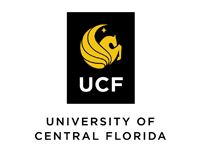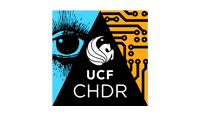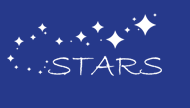Guide for Authors
Guide for Authors
For general information
- Editorial principles
- Authorship
- Guidance for student authors
- Format guide
- Files to prepare
- How to Submit
- Cover letter
- Abstract
- Acknowledgements
- Main Body File
General Information for Authors
The Themed Experience and Attractions Academic Society is proud to invite submissions for consideration for publication in the Journal of Themed Experience and Attractions Studies (JTEAS).
JTEAS is the first peer-reviewed scholarly journal dedicated to research, scholarship, and pedagogy relevant to the planning, design, operation, and analysis of themed experience and attractions. Through a multidisciplinary publication, the Journal aims to be an efficient medium for knowledge translation among scholarly researchers across disciplines and a convenient portal for professional practitioners in the industry to access related research from scholarly institutions.
All contributions will be initially assessed by the Editor for suitability for inclusion in JTEAS. Suitable manuscripts are then typically sent to a minimum of two independent expert reviewers to assess the scholarly quality. Based on recommendations of reviewers, the Editor may require minor or major revision before reconsideration and final editorial decision. The Editor's decision regarding acceptance or rejection of articles is final.
Authors are encouraged to consider JTEAS for original papers about themed experiences or attractions, from any of the relevant academic disciplines, and particularly from interdisciplinary authorship groups. Theoretical/conceptual, empirical, and art/design analysis, or intersections within these categories are welcome. Peer reviewers will consider the differences in scholarly traditions as reflected in the literature cited and reviewed when reviewing methodology, analysis, and conclusions.
Like other scholarly journals, JTEAS will consider only manuscripts not previously published or currently under consideration by other journals.
As an open-access publication, JTEAS will make papers available freely to scholars and the public worldwide, and at this time charges no page fee to authors. Papers will be published under a Creative Commons licence (CC BY-NC-ND; http://creativecommons.org/licenses/by-nc-nd/4.0/).
- Editorial principles promoting ethical and inclusive scholarship
Regardless of the scholarly tradition, all work must have been carried out in accordance with applicable ethical guidelines. Research involving human or animal participants must have been conducted in full compliance with the relevant institutional ethics board certification, which must be mentioned at an appropriate point in the paper.
Research pertaining to marginalized cultural or disability groups will have involved members of those groups in meaningful ways in the development of the research and interpretation of observations.
Articles should not assume readers hold particular beliefs nor agree that any particular gender, disability, culture, nationality, ethnicity, sexual orientation, or geographical region is superior to another. Authors should use inclusive language. Hypothetical abstract persons may be referred to using a mixture of female and male pronouns through the paper, or by use of "he or she", "her/his", or "their".
- Authorship
The authors will determine the order of authorship. The Editor will consider addition, deletion, or change of order of authors if the corresponding author makes such a request by email prior to acceptance of the article with an explanation of the reason for the change, and written confirmation from all authors agreeing with the change.
- Guidance for student authors
The journal strongly recommends that students consult a faculty advisor or collaborate with a faculty co-author for guidance on approaching research intended for publication, construction of the manuscript, and completion of required certifications, disclosures, and declarations.
- Format guide
We encourage authors to format the paper as follows for ease of peer review. Upon acceptance, authors will be requested to provide the final manuscript in a "correct format" for the publication process (separate files for figures and tables, etc.) We will provide a model format and template for submission of the final manuscript.
- Single-spaced
- 12-point Calibri, Times New Roman, Arial or similar simple font
- Single column format, suitable for printing on North American letter paper (8.5" x 11") with 1" margins
- Please turn OFF automatic hyphenation and leave the right margin ragged, NOT full justified (smooth)
- Please turn ON line numbering in the word processing software, with the continuous setting.
- Please use numbered headings (with hierarchical numbering where subheadings are appropriate). We recommend the use of Styles for formatting the headings consistently and keeping numbering updated.
- Figures and tables numbered (separate series for figures and tables), with each cross-referenced in the text and positioned in the document near the referring text. Include captions for figures below the figure and captions for tables above the table.
- In-line and bibliographic citation format following APA style (with page number only for the citation of verbatim passages)
- No footnotes or endnotes except for author affiliations, consistent with APA style.
- Consistent and correct use of either U.S. or British English spelling (spell checked and grammar checked).
- Files to prepare
-
- Anonymous Main Body File (Word or PDF)
- Cover letter, including any copyright permissions for reproduced material. (PDF)
Authors should also prepare to submit up to six (6) keywords, identify three (3) non-conflicted reviewers qualified to review, and the following information:
- Nature of paper: empirical or theoretical/conceptual.
- All authors have seen and approved the submitted version of the manuscript
- The article is the original work of the author(s)
- The article has not previously been published
- The article is not under consideration for publication elsewhere.
- Author(s) hold rights to all material in the manuscript or written permission of copyright holder(s) has been included in the uploaded cover letter.
- Research did not involve human or animal participants or, if it did involve human or animal participants, this protocol was approved by the relevant institutional ethics board and conducted under full compliance with its certification, which has been mentioned at an appropriate point in the paper.
- Declaration of funding source(s) declaring any funding or research grants and their sources received in the course of conducting the work and preparing the manuscript, including support for non-author contributors who performed data collection, statistical consulting, writing support and other services.
- Disclosure of financial or personal interests that could affect the objectivity of the paper, or statement of the nature of any such interest, or statement of the absence of interests. Interests include relationships with individuals or organizations that could influence the work, such as employment, consultancy, stock ownership, expert testimony, patent applications, grants, honoraria or other funding.
- How to Submit
Authors will need the following for the Anonymous Main Body File (Word or PDF):
- Title, concise and informative (and recommended running title if the title is long). Avoid abbreviations in titles. Avoid subtitles.
- Keywords (up to six)
- Main text (see guidance below)
- References
- Appendix (optional)
Note: The file above should not include any identifiable author information, names, contact, etc.
In addition to uploading the file above, the authors will complete an online submission form, which will collect title and author information, acknowledgements, up to six keywords, three suggested reviewers, and the following certifications and declarations, as follows:
- Title, as used in the main body file.
- Author's (authors') name(s) in the final order of authorship, correctly spelled.
- Affiliations. If multiple authors have different institutional affiliations, follow the list of authors with a list of institutions prefaced with lower-case superscript, and place a lower-case superscript immediately after each author's name to indicate their affiliation. For each institution, provide full postal address including country.
- Clearly indicate the corresponding author and ensure that person's email address and full postal address have been provided. If the corresponding author changes email or postal address during the editorial process, update the Editor promptly.
- If an author's affiliation during the performance of the work is not the author's current affiliation, the affiliation should indicate the author's affiliation when the work was performed. The author may add a numbered footnote for that author's present address.
- Acknowledgements (optional) (Do not include acknowledgements on the front page in the body or in a footnote.) Research undertaken with funding (grants, contracts, sponsorships, commercial investment, or other) must acknowledge the source(s) of funds and identify any potential conflicts of interest relevant to the reported research.
- Certification that
- all authors have seen and approved the submitted version of the manuscript
- the article is the original work of the author(s)
- the article has not previously been published
- the article is not under consideration for publication elsewhere.
- author(s) hold rights to all material in the manuscript or that written permission of copyright holder has been uploaded
- Declaration of funding source(s) declaring any funding or research grants and their sources received in the course of conducting the work and preparing the manuscript, including support for non-author contributors who performed data collection, statistical consulting, writing support and other services.
- Disclosure of financial or personal interests that could affect the objectivity of the paper, or statement of the nature of any such interest, or statement of the absence of interests. Interests include relationships with individuals or organizations that could influence the work, such as employment, consultancy, stock ownership, expert testimony, patent applications, grants, honoraria or other funding.
- Ethics declaration. In addition to stating ethics certification, where applicable, at an appropriate point in the article, authors will attest to ethics.
- About the Cover letter
The cover letter is a simple letter to introduce your manuscript to the Editor. In view of the interdisciplinary nature of the journal and its specific focus on themed experience and attractions industry, please use the cover letter to briefly describe the type of paper (Theoretical/Conceptual, Empirical or Art/Design), explain how the research is relevant and topical for this industry, and situate it in its scholarly context. If the paper is related to concurrent submissions or a continuation of a previously published paper, the authors may make this connection. If the paper may be mistaken for a previously published or concurrent submission to another journal but is in fact different, the letter may make the difference explicit to aid in processing reviews from reviewers who might be reviewing for both journals. Requests to exclude certain reviewers may be included in the letter. Any particular notable information from the interest disclosure and permissions may be mentioned in the letter.
If any material in the manuscript, including but not limited to illustrations and photographs, is not the copyright of the author(s), author(s) must include document(s) from the copyright holder(s) in the cover letter file authorizing this use.
The online submission form will provide a space to upload your cover letter in addition to the main body file.
- About the Abstract
The Abstract is a summary of the paper, not an advertisement for it. By reading these 200-300 words, readers should be able to learn the most important results and conclusions of the paper. The Journal prefers structured Abstracts. Although subheadings are not required within the Abstract, the Abstract should include approximately one sentence summarizing each of:
- the background
- prior knowledge/ literature
- methodology or theoretical frame of the paper
- primary results/ observations
- meaning and importance of the work in relation to the themed experience and attraction domain.
Citation of references in the Abstract should be avoided, but if unavoidable because the paper is specifically about a previously published work, reference to that work should take the form of (author, year) or author (year) as appropriate, and not the full citation.
- About Acknowledgements
Acknowledgements of individual and institutional non-author contributors may be included. If the research has been funded by a grant, contract, or other form of financial support to author(s), the funders must be acknowledged in this section, along with any conflict of interest statement, if applicable. In the final publication, this will appear on the second page of the PDF cover page. In the submission for review, will only be available to journal editors, not reviewers.
- About the Main Body File
The journal welcomes papers of different kinds according to diverse scholarly traditions, including Theoretical / Conceptual and Empirical. The author will determine the most appropriate structure and flow of the paper.
For papers from scientific and positivist disciplines (generally, any empirical and many theoretical/conceptual papers), the structure of the paper will typically comprise the following sections:
- Title: same title as used in the Title/Author file.
- Introduction: the big problem (or unknown), the narrower problem, what domain the problem fits in, and what the field knows about it; the specific gap within that addressed in the paper, what approach is used in the study, and the results. This section states objectives and rationale but avoids detailed literature survey/review.
- Method: the question, what paper needs to find/show, what methods will enable that section describes sufficient details to allow the work to be replicated by an independent researcher. Alternatively, the research may have used a method fully reported elsewhere, and the paper may cite a source which describes this method, and document any modifications made to it.
- Results presented concisely (processed data and statistics, structured in relation to the logic for answering the question) and Discussion documenting what was found, how it relates to a previously identified gap in knowledge, i.e., the meaning and significance of results in the context of the paper's objectives, what the paper is useful for and what difference it has made. Limitations must be discussed, particularly how to interpret the magnitude of uncertainty, ways to mitigate limitations in future studies.
- Results and Discussion may be reported in separate or combined sections.
- For papers comprising multiple complementary sub-studies, results may be reported following each method, and discussion of the combined results should be reported in a separate section.
- Conclusions are required. These may be included at the end of the Discussion or separately
For papers in the humanities (including some theoretical/conceptual and design analysis papers), papers will typically comprise the following sections:
- Title: same title as used in the Title/Author submission form.
- Introduction: introduce a thesis
- Method: use methods and strategies appropriate to the discipline including case studies, interviews, textual analysis, critical analysis, construction of original theories, application of existing theories to new contexts, archival work, curation, historiography, et al.
- Results: present and interpret evidence and counter-evidence and Discussion documenting how the evidence has responded to the thesis, and remarking on the significance of the research, what the paper is useful for and what difference it has made, and may identify related unanswered questions. Limitations must be discussed, particularly how to interpret the magnitude of uncertainty, ways to mitigate limitations in future studies. Results and Discussion may be reported in separate or combined sections.
- Conclusions are required. These may be included in the Discussion or as a separate section.
References, following the APA style (latest edition). Ensure all references in the References list are cited in the paper and all references in the paper are listed in the References. Do not begin the References section on a new page unless this is necessary. Please refer to the APA style guide for the correct formatting of references. Helpful guidance for authors may be found at http://www.apastyle.org
Appendix. An Appendix is not required. If author(s) wish to include extended exhibits such as original survey instruments as an Appendix, this section is ordered after the References.




